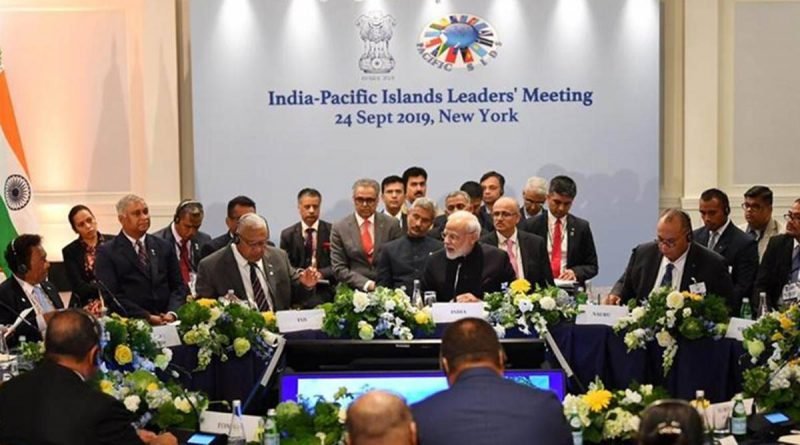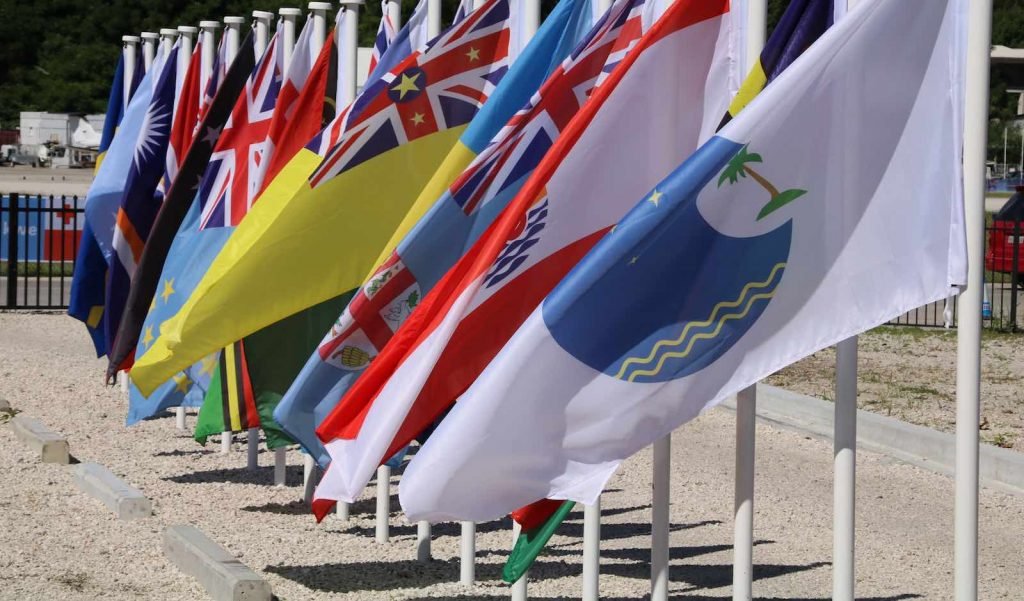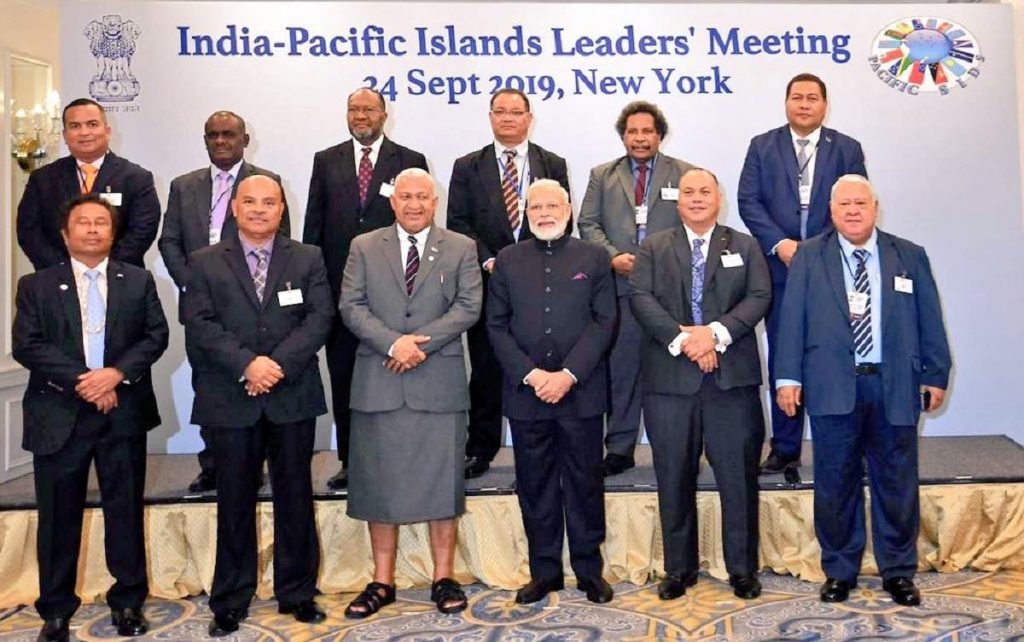India’s Pacific Island Policy: An Overview

Recently, India’s external affairs minister has proposed potential cooperation between India and Japan for joint projects in the Pacific island countries. Since the past few years, India has been expanding its footprint in the Pacific islands due to a significant shift in the geopolitics of the Pacific region.
India’s outlook towards the Pacific islands can be regarded as a region positioned in the periphery of the concentric circles. According to the Indian Maritime Doctrine 2015, Western Pacific and the littoral regions are viewed as secondary areas of interest. Historically, India’s interaction with the Pacific islands has always been very limited and mostly confined to the Fiji Islands, due to the presence of a large Indian diaspora.
With the evolution of the international landscape due to events like the rise of China, the United States Asia pivot policy, Japan’s Asian democratic security diamond concept and the unveiling of the Indo-Pacific strategy by Australia, India also made a concerted effort to revamp its outlook towards the Asia-Pacific region by shifting from the Look East Policy to the Act East Policy. India’s proactive diplomacy culminated with Prime Minister Modi’s first visit to Fiji Islands in 2014 after 33 years, therefore indicating a shift in the approach of engaging with the Pacific islands. This remarkable shift in India’s approach towards the Pacific islands can be attributed to a few significant factors, which are as follows;

India’s increasing economic and strategic interests in the region; Pacific islands have a significant relevance as they are in a strategic location astride major maritime passageways, with large Exclusive Economic Zones and the availability of agricultural products, liquefied natural gas, copper, sugar and sugar-based biofuels, and fish. Recognising India’s growing economic needs it is a vast opportunity which needs to be explored. In terms of strategic interests, the Pacific islands’ political power as a voting bloc in international organisations gives it a growing value in Indian foreign policy, as they have consistently supported New Delhi’s aspiration for a permanent seat in a reformed U.N. Security Council.
The emergence of an assertive China; The rise of China is a serious concern for most of the major and middle powers in the world because China has single-handedly managed to interfere into every major country’s spheres of influence with its Belt and Road Initiative, which is one of the primary reasons for the articulation of the Indo-Pacific construct. In this emerging geopolitical contestation, India needs to embrace the Indo-Pacific construct holistically and cannot focus inordinately on the Indian Ocean alone.
China has already made inroads in the region through massive aid and infrastructural support. It is the third-largest donor in the Pacific island countries followed by Australia and New Zealand. One of the primary reasons of China’s aggressive engagement is to persuade the Pacific island countries to shift their recognition from Taiwan to China and accept the One-China Policy. Moreover, China is exploring the possibilities of setting up a permanent military base and has approached Vanuatu, which could potentially jeopardise India’s role in the region as the Indian Space Research Organization (ISRO) is planning to install space research and satellite monitoring station in Fiji. Such developments give India the scope to expand its engagements with the region from a strategic perspective. The calls for furthering the partnership between India and Japan by the Indian External Affairs Minister, for expansion of economic projects are a step towards the right direction.
Lastly and most importantly, India’s recognition that Kindleberger Trap is more serious than Thucydides trap, indicating India’s intention to be a major provider of global public goods and not look at the region purely in geopolitical terms. India is an active participant in the global conversations on climate change, connectivity and maritime security. Holding to the spirit that Kindleberger Trap is more serious than Thucydides Trap, during the first meeting in 2014 with the Pacific island countries, a slew of agreements were signed. India ramped up its engagement by setting up a special adaptation fund of US$1 million, starting the Pan-Pacific island project, initiating visa on arrival for all the fourteen Pacific Island countries, increased the amount of Grant-in-Aid to Pacific Island countries from US$125,000 to US$200,000 and among other things, India also announced that a Forum for India-Pacific Islands Cooperation (FIPIC) be held regularly.
Climate change is an existential threat for the Pacific island countries and taking into account the grave nature of this issue, Prime Minister Modi gave assurances on building capacity in the Pacific Islands nations for better disaster management through human resource development and application of space technology for mitigating the impact of climate change. In addition to other things, India also helped Nauru in building sea walls to combat the rising sea levels and Vanuatu received cash assistance of US$250,000 during Cyclone Pam in 2015.

In 2019, the Prime Minister held a meeting with the leaders of the Pacific island states on the margins of the UNGA. He invited them to join initiatives like the International Solar Alliance (ISA) and the Coalition for Disaster Resilience Infrastructure (CDRI). He also announced a US$12 million grant and an additional US$150 million concessional line of credit for renewable energy projects. Recently, India provided medical and other assistance to Solomon Islands, Nauru, Papua New Guinea, Kiribati, Tonga, Tuvalu and Palau as these islands were seriously affected by the Cyclone Herald in the middle of the pandemic.
In this fast-changing global environment which is further accentuated by the pandemic, India must focus not only to further its national interests but also contribute to the global good. India will have to work towards maintaining its visible presence in the region along with partners such as Japan, Australia and the U.S. If India intends to play a significant role in the Indo-Pacific, it needs to be an active player in the Pacific region and ensure a stable periphery. India should also keep in mind the interests and specific development challenges of the Pacific islands in its attempt to secure the region for its own interests in the future.


















